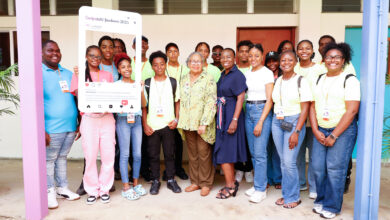By Marcia Forbes, PhD
CJ Contributor
As a member of the Inter-American Development Bank’s Civil Society Consultative Committee I was invited to present at the ‘XIV Reunion BID – Sociedad Civil’ in Nicaragua late 2014. The following are excerpts from my preparation pertaining to Caribbean youth and jobs.
Regional Diversity
The Caribbean, by whatever definition, is comprised of countries that are not homogeneous. They present diverse and unique features such as geographical size, multi-ethnic populations with cultural differences, varying age profiles and socio-economic conditions. Data which present aggregated perspectives of the region are quite likely to disguise important differences. That noted, many members of CARICOM share common features such as high youth employment, poverty, high crime rates, high levels of female headed households and failing education systems. So even in their admitted diversity, Caribbean youths bear some similarities.
Youth – A Critical Cohort
Like the Caribbean, the definition of ‘youth’ varies. Different organizations use different age ranges in their definition. Many Caribbean youth policies categorize those 15 to 30 years of age as ‘youth’. For the United Nations it is those 15 to 24 years of age. In its 2010 report, Eye on the Future Investing in Youth Now for Tomorrow’s Community, CARICOM used the age range of 15 to 20. It is not always clear which age range is being used by various studies and reports.
The Caribbean has a youthful population, with sixty (60) per cent of its citizenry under the age of 30 years. Those in the 15 to 29 age range comprise almost twenty (20) percent of this. Young people therefore form a critical cohort and represent the hopes, aspirations and future of the region.
Caribbean has Highest Youth Unemployment Levels
Although youth unemployment is a big issue globally, it is especially so across many Caribbean countries. Caribbean youth unemployment levels are reported to be the highest in the world (Youth Unemployment and Labour in the Caribbean, Caribbean Knowledge Series, January 2014).
Underemployment is also a major concern. Looking at the labour force data for Jamaica, one frightening statistic is that almost two-thirds of the underemployed fall in the 25 to 44 age range. Then too, almost another 40% is unemployed. This country is increasingly unable to compete because the culture of work is foreign to so many of her citizens. Youth unemployment and underemployment are cancers that eat away at the psychological well-being of Caribbean youth.
Negative Social Conditions
Hit by the global recession of 2008/2009, many Caribbean countries, already reeling from poverty and high debt to GDP ratios, have sunken deeper into economic decline, with a regional average of zero economic growth in 2010. Caribbean countries have also declined into social quagmire. Within the region, negative social conditions of poverty, crime, relatively high rates of teenage pregnancy and HIV/AIDS, mismatch between workplace requirements and school curricula, and joblessness have pushed eighty-five percent (85%) of youth in this region to see migration to more developed countries as an attractive option (Eye on the Future, CARICOM 2010).
Regional Unemployment
Figure 3 (data sourced from Youth Unemployment and Labour in the Caribbean, January 2014) highlights unemployment levels in selected Caribbean countries before and after the global recession. Although these are national levels, we know that the trend is for youth unemployment to be substantially above national levels. Take Barbados for example where in 2010 the national rate was 11.1% while the overall youth unemployment rate was about 2.5 times higher at 27.6%. We also know that in general female youths suffer greater levels of unemployment than their male counterparts.






